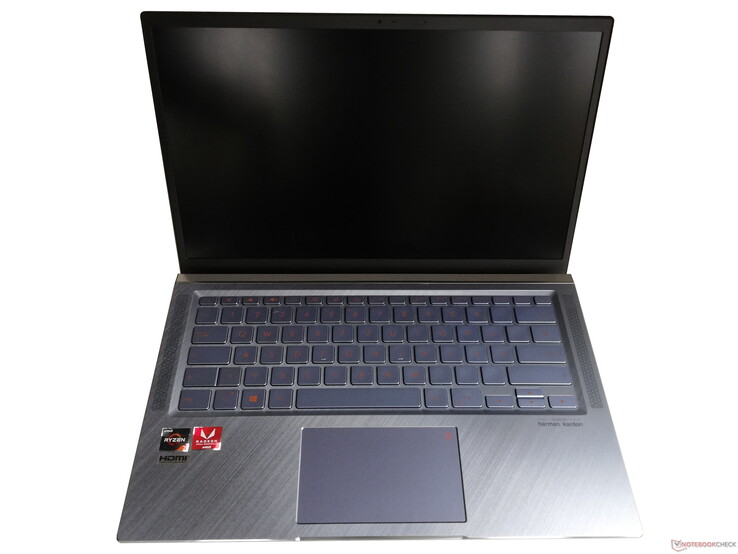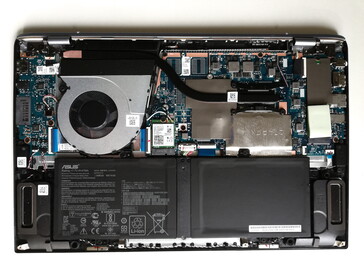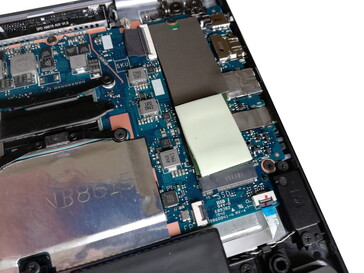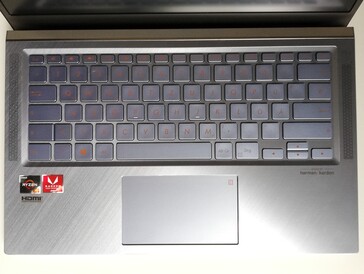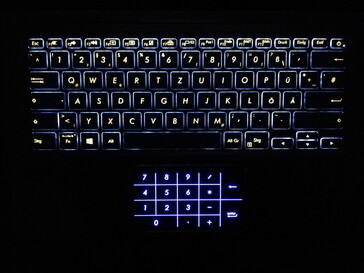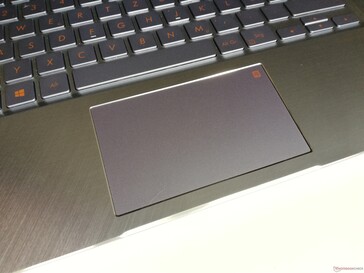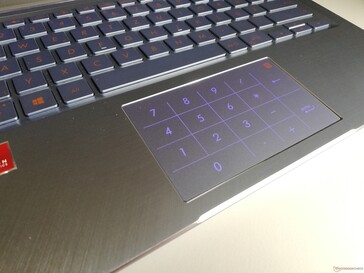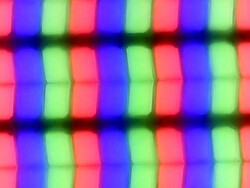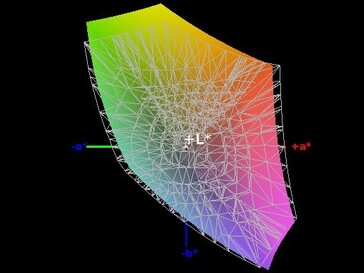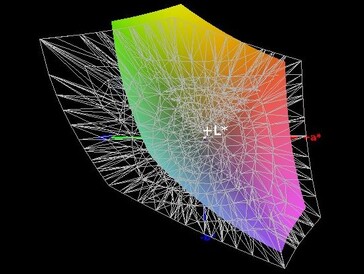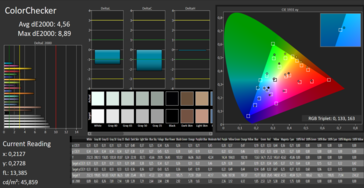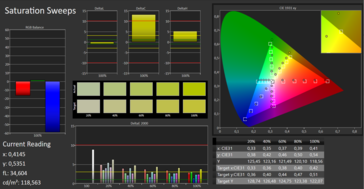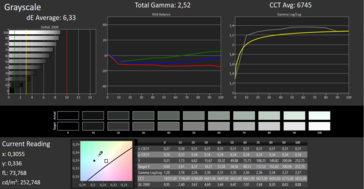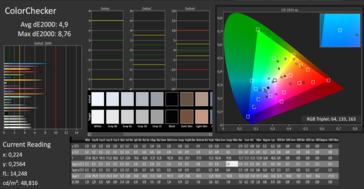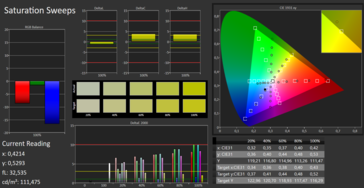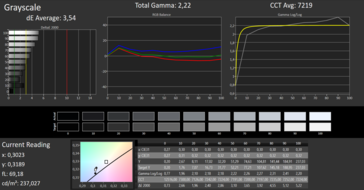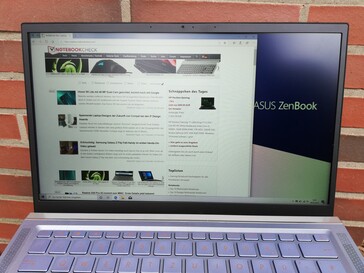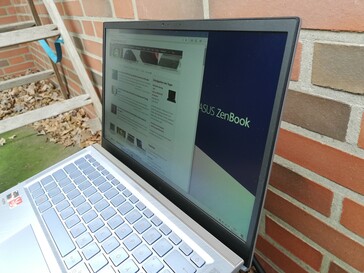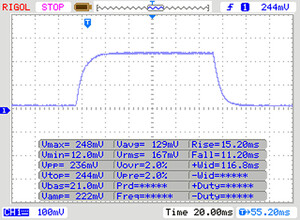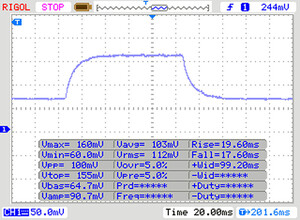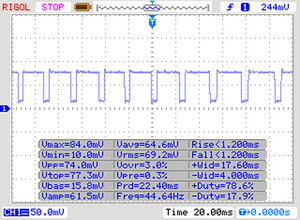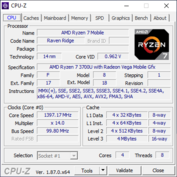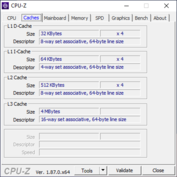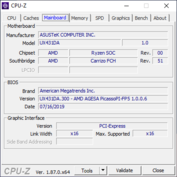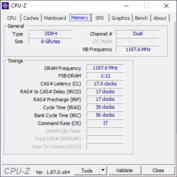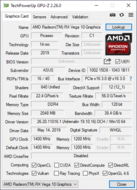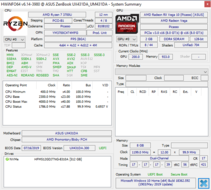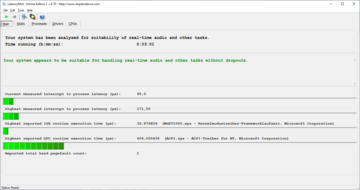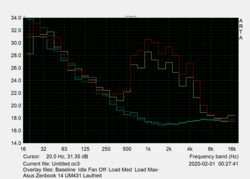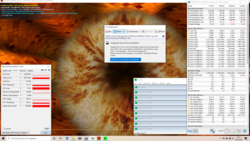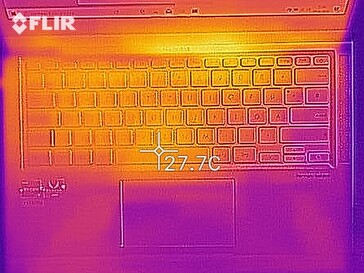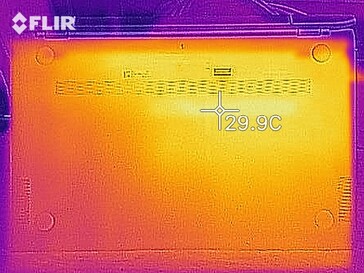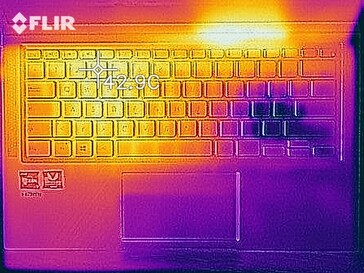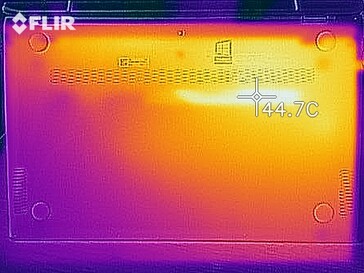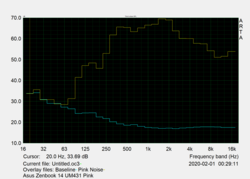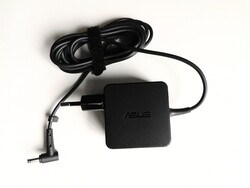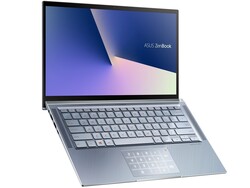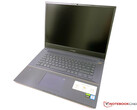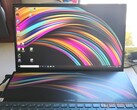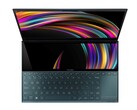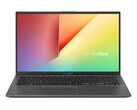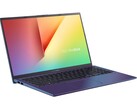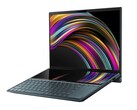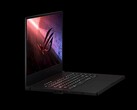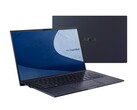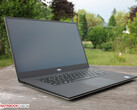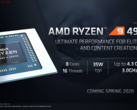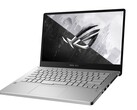Asus ZenBook 14 UM431DA laptop review: Also makes a good impression with Ryzen

In addition to the ZenBooks 14 UX433FA and UX433FN with Intel processors that we've already tested, we also have a model with an AMD CPU in hand now. It includes a powerful AMD Ryzen 7 3700U processor with a Radeon RX Vega 10 graphics unit and 8 GB of RAM, as well as a 512 GB SSD. With its handy size, it's aimed at mobile users who want to work on a variety of office tasks on the go too.
In this review, we compare the Asus ZenBook 14 UM431DA-AM020T with the competitors listed below. Under each section, however, you can also add more laptops from our database for comparison.
Rating | Date | Model | Weight | Height | Size | Resolution | Price |
|---|---|---|---|---|---|---|---|
| 81.2 % v7 (old) | 02 / 2020 | Asus ZenBook 14 UM431DA-AM020T R7 3700U, Vega 10 | 1.4 kg | 16 mm | 14.00" | 1920x1080 | |
| 88.4 % v6 (old) | 07 / 2019 | Lenovo ThinkPad E595-20NF0000GE R7 3700U, Vega 10 | 1.9 kg | 19.9 mm | 15.60" | 1920x1080 | |
| 79.7 % v6 (old) | 08 / 2019 | Dell Inspiron 15 5000 5585 R7 3700U, Vega 10 | 1.8 kg | 19.5 mm | 15.60" | 1920x1080 | |
| 80.9 % v7 (old) | 01 / 2020 | MSI Modern 14 A10RB-459US i5-10210U, GeForce MX250 | 1.2 kg | 16 mm | 14.00" | 1920x1080 | |
| 77.8 % v7 (old) | 01 / 2020 | HP Pavilion 14-ce3040ng i7-1065G7, GeForce MX250 | 1.6 kg | 18 mm | 14.00" | 1920x1080 |
Case - Stable but prone to scratches
The case of the ZenBook 14 is made of metal and features a brushed surface. Due to the selected material, the small laptop looks very robust but is prone to scratches. A trim bar below the screen provides an optical enhancement, and grills to the left and right of the keyboard hide the speakers.
For ZenBooks, the lifting mechanism has almost become a trademark, which causes the base to move slightly upwards when the lid is opened. This promotes air circulation but also creates an unpleasant edge if you want to use the laptop on your lap, for example.
Despite its robust material, the Asus ZenBook 14 UM431DA is one of the lightest laptops in our test field. Among the 14-inch competitors, it is much more compact, especially in its depth, but it's on average for the other dimensions.
Connectivity - ZenBook 14 offers a USB Type-C port
The ZenBook 14 offers the most necessary ports but can be extended via the USB Type-C port and with appropriate adapters or a docking station. The ports are located on the sides at the rear of the laptop, so cables lying in the way don't represent a problem.
SD card reader
Asus has built an SD card reader into the ZenBook 14, whereby corresponding cards can only be inserted about one centimeter into the case. As a result, a large part of the storage medium sticks out, so that SD cards can't remain in the laptop during transport.
With our Toshiba Exceria Pro SDXC 64 GB UHS II reference memory card, the car reader only reaches below-average speeds of 26.4 MB/s for reading and 37.1 MB/s for writing data.
| SD Card Reader | |
| average JPG Copy Test (av. of 3 runs) | |
| Lenovo ThinkPad E595-20NF0000GE (Toshiba Exceria Pro M501 64 GB UHS-II) | |
| Average of class Subnotebook (18.4 - 142, n=13, last 2 years) | |
| Dell Inspiron 15 5000 5585 (Toshiba Exceria Pro SDXC 64 GB UHS-II) | |
| HP Pavilion 14-ce3040ng (Toshiba Exceria Pro SDXC 64 GB UHS-II) | |
| MSI Modern 14 A10RB-459US (Toshiba Exceria Pro SDXC 64 GB UHS-II) | |
| Asus ZenBook 14 UM431DA-AM020T (Toshiba Exceria Pro SDXC 64 GB UHS-II) | |
| maximum AS SSD Seq Read Test (1GB) | |
| Lenovo ThinkPad E595-20NF0000GE (Toshiba Exceria Pro M501 64 GB UHS-II) | |
| Average of class Subnotebook (22.5 - 207, n=13, last 2 years) | |
| Dell Inspiron 15 5000 5585 (Toshiba Exceria Pro SDXC 64 GB UHS-II) | |
| Asus ZenBook 14 UM431DA-AM020T (Toshiba Exceria Pro SDXC 64 GB UHS-II) | |
| HP Pavilion 14-ce3040ng (Toshiba Exceria Pro SDXC 64 GB UHS-II) | |
| MSI Modern 14 A10RB-459US (Toshiba Exceria Pro SDXC 64 GB UHS-II) | |
Communication
The Asus ZenBook 14 UM431D can connect wirelessly via Bluetooth 5.0 and WLAN with the Wi-Fi 5 standard. With it, the 14-inch laptop achieves average speeds of 416 Mb/s for receiving data and 598 Mb/s for sending data. This puts the Asus laptop in the second to last place in our test field.
Accessories
In the box, the Asus ZenBook comes with the laptop itself and a matching 45-watt power adapter. The variant we tested was also accompanied by a suitable carrying case. However, buyers must ensure that this is actually included in their offer. Without a case included, the Asus ZenBook 14 is usually offered a little cheaper.
Maintenance
The base cover of the Asus ZenBook 14 can be removed after all Torx screws at the bottom have been loosened. This frees up access to the interior, whereby only the Wi-Fi module and the SSD can be replaced. Memory is firmly soldered, and a free RAM slot isn't available either.
Warranty
Asus grants buyers of the ZenBook 14 UM431D a 24-month warranty period.
Input devices - Asus laptop with number pad
Keyboard
The keys of the ZenBook 14 UM431D have a size that is suitable for writing tasks. The pressure point can be felt clearly, but due to the smooth surface, individual keys aren't always met accurately. Even after an adjustment period, incorrect inputs keep happening, and the very small function keys can only be used if you look closely at them. The three-stage backlight ensures a non-dazzling illumination of the key labels in the dark.
Touchpad
As mouse replacement, Asus uses a ClickPad that is suitable for precise mouse pointer navigation due to its average size. Both left and right mouse clicks can be triggered correctly by touching or applying pressure on the pad. There's an icon in the upper right corner that allows a number pad to be projected onto the ClickPad. In doing so, mouse navigation still remains available, but touch inputs trigger the corresponding input of the number pad. This worked very well in our test and shows itself as a meaningful addition to the keyboard.
Display - 14-inch panel with strong screen bleeding
The screen of the Asus ZenBook 14 consists of a 14-inch IPS panel and offers a resolution of 1920x1080 pixels. The brightness is on the second to last place of our test field with an average of 245 cd/m² but can be described as sufficient. On the other hand, the brightness distribution is below average at only 78%, and there is evident screen bleeding in the lower right corner.
Asus hasn't completely forgone PWM for brightness control. In this way, brightness levels of less than 20% show flickering at a frequency of 44 Hz. Since this is a very low value, even users with less sensitive eyes could also notice an effect. However, the consequences of this will vary depending on the brightness set.
| |||||||||||||||||||||||||
Brightness Distribution: 78 %
Center on Battery: 263 cd/m²
Contrast: 1124:1 (Black: 0.225 cd/m²)
ΔE ColorChecker Calman: 8.89 | ∀{0.5-29.43 Ø4.78}
calibrated: 4.9
ΔE Greyscale Calman: 6.33 | ∀{0.09-98 Ø5}
91% sRGB (Argyll 1.6.3 3D)
60% AdobeRGB 1998 (Argyll 1.6.3 3D)
67.5% AdobeRGB 1998 (Argyll 3D)
92.3% sRGB (Argyll 3D)
66.7% Display P3 (Argyll 3D)
Gamma: 2.52
CCT: 6745 K
| Asus ZenBook 14 UM431DA-AM020T CEC PA LM140LF-3L03, IPS, 1920x1080, 14" | Lenovo ThinkPad E595-20NF0000GE NV156FHM-N49, IPS, 1920x1080, 15.6" | Dell Inspiron 15 5000 5585 LG Philips 156WFC, IPS, 1920x1080, 15.6" | MSI Modern 14 A10RB-459US Chi Mei N140HCE-EN2, IPS, 1920x1080, 14" | HP Pavilion 14-ce3040ng AUO543D, IPS, 1920x1080, 14" | |
|---|---|---|---|---|---|
| Display | -39% | -42% | -1% | 3% | |
| Display P3 Coverage (%) | 66.7 | 39.88 -40% | 37.31 -44% | 64.2 -4% | 66.5 0% |
| sRGB Coverage (%) | 92.3 | 58.6 -37% | 56.2 -39% | 94.8 3% | 98.4 7% |
| AdobeRGB 1998 Coverage (%) | 67.5 | 41.2 -39% | 38.55 -43% | 65.4 -3% | 68.2 1% |
| Response Times | -20% | 8% | -23% | -42% | |
| Response Time Grey 50% / Grey 80% * (ms) | 36 ? | 41.2 ? -14% | 28.4 ? 21% | 39.2 ? -9% | 60.8 ? -69% |
| Response Time Black / White * (ms) | 26 ? | 32.8 ? -26% | 27.2 ? -5% | 35.6 ? -37% | 29.6 ? -14% |
| PWM Frequency (Hz) | 44 ? | 1220 ? | 25000 ? | ||
| Screen | -16% | -22% | 30% | 14% | |
| Brightness middle (cd/m²) | 253 | 318 26% | 253.6 0% | 324.1 28% | 395 56% |
| Brightness (cd/m²) | 245 | 297 21% | 227 -7% | 301 23% | 375 53% |
| Brightness Distribution (%) | 78 | 89 14% | 84 8% | 87 12% | 91 17% |
| Black Level * (cd/m²) | 0.225 | 0.17 24% | 0.27 -20% | 0.22 2% | 0.26 -16% |
| Contrast (:1) | 1124 | 1871 66% | 939 -16% | 1473 31% | 1519 35% |
| Colorchecker dE 2000 * | 8.89 | 5.5 38% | 6.05 32% | 1.63 82% | 5.92 33% |
| Colorchecker dE 2000 max. * | 4.56 | 21 -361% | 14.03 -208% | 4.25 7% | 9.79 -115% |
| Colorchecker dE 2000 calibrated * | 4.9 | 5.1 -4% | 4.97 -1% | 1.42 71% | 0.91 81% |
| Greyscale dE 2000 * | 6.33 | 1.8 72% | 3.2 49% | 2.2 65% | 6.69 -6% |
| Gamma | 2.52 87% | 2.12 104% | 2 110% | 2.26 97% | 2.78 79% |
| CCT | 6745 96% | 6257 104% | 6820 95% | 6887 94% | 7596 86% |
| Color Space (Percent of AdobeRGB 1998) (%) | 60 | 37.6 -37% | 35.5 -41% | 60.2 0% | 63 5% |
| Color Space (Percent of sRGB) (%) | 91 | 58.2 -36% | 55.6 -39% | 95 4% | 98 8% |
| Total Average (Program / Settings) | -25% /
-21% | -19% /
-22% | 2% /
17% | -8% /
5% |
* ... smaller is better
Our measurements certify a good contrast ratio of 1,124:1 for the Asus ZenBook 14 and an equally good black value of 0.225 cd/m². This makes colors look well separated from each other and blacks are displayed relatively richly.
The CalMAN analysis also shows that colors are displayed with a slight deviation but with components shifting to green. This can be compensated for by calibration, whereby the deviation remains, but the color components are somewhat shifted. The corresponding ICC file can be downloaded in the window located at the top, to the right of the display's brightness distribution graph.
Display Response Times
| ↔ Response Time Black to White | ||
|---|---|---|
| 26 ms ... rise ↗ and fall ↘ combined | ↗ 15 ms rise | |
| ↘ 11 ms fall | ||
| The screen shows relatively slow response rates in our tests and may be too slow for gamers. In comparison, all tested devices range from 0.1 (minimum) to 240 (maximum) ms. » 61 % of all devices are better. This means that the measured response time is worse than the average of all tested devices (20.2 ms). | ||
| ↔ Response Time 50% Grey to 80% Grey | ||
| 36 ms ... rise ↗ and fall ↘ combined | ↗ 19 ms rise | |
| ↘ 17 ms fall | ||
| The screen shows slow response rates in our tests and will be unsatisfactory for gamers. In comparison, all tested devices range from 0.165 (minimum) to 636 (maximum) ms. » 49 % of all devices are better. This means that the measured response time is worse than the average of all tested devices (31.6 ms). | ||
Screen Flickering / PWM (Pulse-Width Modulation)
| Screen flickering / PWM detected | 44 Hz | ≤ 20 % brightness setting | |
The display backlight flickers at 44 Hz (worst case, e.g., utilizing PWM) Flickering detected at a brightness setting of 20 % and below. There should be no flickering or PWM above this brightness setting. The frequency of 44 Hz is very low, so the flickering may cause eyestrain and headaches after extended use. In comparison: 53 % of all tested devices do not use PWM to dim the display. If PWM was detected, an average of 8108 (minimum: 5 - maximum: 343500) Hz was measured. | |||
Performance - Good system performance despite weak CPU
With AMD hardware, the Asus ZenBook 14 also targets users looking for an ultra-mobile, small and lightweight laptop for everyday office use. The manufacturer offers the device with a larger number of hardware variants, but they all belong to the category of office devices with built-in graphics cards. In addition, there are variations in the built-in memory and storage.
Processor
The AMD Ryzen 7 3700U is a quad-core processor that can handle up to eight threads simultaneously. The clock rates are between 2.3 and 4 GHz, whereby the maximum clock speed can only be maintained in the long run with sufficient cooling. In our Cinebench endurance test, the ZenBook 14 can only retrieve the maximum CPU performance very briefly. Afterwards, it drops by about 20% and is then below the level of a Ryzen 5 3500U. The Lenovo ThinkPad E595, for example, shows the kind of performance that's achievable with the Ryzen 7 3700U in the long run.
In the Cinebench R15 single-core and multi-core individual performance tests, the ZenBook 14 achieves values that are just below the average of other laptops with this CPU.
System performance
In the PCMark 8 and 10 system performance benchmarks, the Asus ZenBook 14 UM431D achieves slightly above-average results. In everyday life, this is reflected in a smooth operating system and fast-launching programs. Access to files and the system startup are also smooth.
The performance obtained by other laptops in our tests can be found in our CPU Benchmarks article.
| PCMark 8 Home Score Accelerated v2 | 3604 points | |
| PCMark 8 Work Score Accelerated v2 | 4842 points | |
| PCMark 10 Score | 3851 points | |
Help | ||
Storage
The SSD installed in the Asus ZenBook 14 achieves good read and write speeds in our storage benchmarks, which are slightly above the average of other laptops with this storage that we have tested. The performance offered by the SK Hynix BC501 used here compared to other SSDs can be found in our HDD/SSD Benchmarks article.
| Asus ZenBook 14 UM431DA-AM020T SK hynix BC501 HFM512GDHTNG-8310A | Lenovo ThinkPad E595-20NF0000GE SK Hynix BC501 HFM512GDJTNG | Dell Inspiron 15 5000 5585 WDC PC SN520 SDAPNUW-512G | MSI Modern 14 A10RB-459US Kingston RBUSNS8154P3512GJ | HP Pavilion 14-ce3040ng Toshiba XG6 KXG60ZNV1T02 | Average SK hynix BC501 HFM512GDHTNG-8310A | |
|---|---|---|---|---|---|---|
| CrystalDiskMark 5.2 / 6 | 11% | -3% | 15% | 108% | 10% | |
| Write 4K (MB/s) | 118.8 | 129.5 9% | 105.9 -11% | 107.7 -9% | 181.6 53% | 110 ? -7% |
| Read 4K (MB/s) | 41.62 | 41.23 -1% | 36.56 -12% | 39.73 -5% | 57.4 38% | 40.6 ? -2% |
| Write Seq (MB/s) | 796 | 811 2% | 1165 46% | 926 16% | 1982 149% | 677 ? -15% |
| Read Seq (MB/s) | 1101 | 1145 4% | 423.2 -62% | 1014 -8% | 1899 72% | 1104 ? 0% |
| Write 4K Q32T1 (MB/s) | 234.7 | 314.1 34% | 332.1 41% | 343.6 46% | 509 117% | 438 ? 87% |
| Read 4K Q32T1 (MB/s) | 313.8 | 356.2 14% | 229.3 -27% | 499.1 59% | 545 74% | 338 ? 8% |
| Write Seq Q32T1 (MB/s) | 842 | 839 0% | 1460 73% | 1033 23% | 3072 265% | 860 ? 2% |
| Read Seq Q32T1 (MB/s) | 1645 | 2042 24% | 472.5 -71% | 1604 -2% | 3281 99% | 1786 ? 9% |
| AS SSD | 5% | -9% | -25% | 79% | 6% | |
| Seq Read (MB/s) | 1417 | 1698 20% | 398.9 -72% | 1061 -25% | 2762 95% | 1471 ? 4% |
| Seq Write (MB/s) | 781 | 740 -5% | 884 13% | 953 22% | 2493 219% | 612 ? -22% |
| 4K Read (MB/s) | 37.03 | 39.18 6% | 34.54 -7% | 35.59 -4% | 52.1 41% | 40.2 ? 9% |
| 4K Write (MB/s) | 80.1 | 87.7 9% | 82.1 2% | 87 9% | 147.5 84% | 108.8 ? 36% |
| 4K-64 Read (MB/s) | 740 | 764 3% | 647 -13% | 769 4% | 1473 99% | 794 ? 7% |
| 4K-64 Write (MB/s) | 748 | 669 -11% | 985 32% | 733 -2% | 1456 95% | 764 ? 2% |
| Access Time Read * (ms) | 0.047 | 0.04 15% | 0.072 -53% | 0.084 -79% | 0.094 -100% | 0.046 ? 2% |
| Access Time Write * (ms) | 0.045 | 0.036 20% | 0.047 -4% | 0.136 -202% | 0.03 33% | 0.03533 ? 21% |
| Score Read (Points) | 918 | 973 6% | 721 -21% | 911 -1% | 1801 96% | 981 ? 7% |
| Score Write (Points) | 906 | 831 -8% | 1155 27% | 916 1% | 1853 105% | 867 ? -4% |
| Score Total (Points) | 2270 | 2261 0% | 2279 0% | 2294 1% | 4568 101% | 2315 ? 2% |
| Total Average (Program / Settings) | 8% /
7% | -6% /
-6% | -5% /
-8% | 94% /
91% | 8% /
8% |
* ... smaller is better
Graphics card
In the Asus ZenBook 14 UM431DA, the AMD Radeon RX Vega 10 integrated graphics unit handles displaying image content. This GPU benefits greatly from built-in memory in dual-channel configuration and, with enough RAM, is even suitable for simple games. With the 8 GB of RAM installed here, the ZenBook achieves benchmark values that are slightly below the average of other laptops with this GPU in the 3DMark 11 test, and slightly above this average in the Fire Strike and Cloud Gate 3DMark tests. With this result, the ZenBook 14 is also suitable for light image-editing.
Our GPU Benchmarks article shows what performance can be expected from other graphics cards compared to the AMD Radeon RX Vega 10.
| 3DMark 11 Performance | 3449 points | |
| 3DMark Cloud Gate Standard Score | 11126 points | |
| 3DMark Fire Strike Score | 2028 points | |
Help | ||
Gaming performance
AMD's Radeon RX Vega 10 is definitely suitable for games. With the 8 GB of RAM installed here, older games with medium graphics levels can be run smoothly. Titles that aren't very graphically demanding can also be easily played in Full HD. The Asus ZenBook had no problems in our test with a resolution of 1366x780, which should be preferred for a smooth gaming experience on this laptop.
The performance that can be expected in other titles with the AMD Radeon RX Vega 10 can be found in our GPU Games article.
| low | med. | high | ultra | |
|---|---|---|---|---|
| BioShock Infinite (2013) | 93.8 | 60.7 | 49.72 | 17.4 |
| Dota 2 Reborn (2015) | 68.7 | 58.6 | 36 | 30.2 |
| Final Fantasy XV Benchmark (2018) | 16.1 | 8.1 |
Emissions - Audible noise development under load
Noise emissions
The fans of the ZenBook 14 are usually turned off in daily usage with an active browser and during writing tasks. With slightly more demanding applications, they start to spin with a uniform noise, but they can still easily hide in the ambient noise. Only under full load can the fans be clearly heard. Therefore, the ZenBook 14 should only be used for light tasks while in noise-sensitive environments.
Noise level
| Idle |
| 28 / 28 / 28 dB(A) |
| Load |
| 36.8 / 39 dB(A) |
 | ||
30 dB silent 40 dB(A) audible 50 dB(A) loud |
||
min: | ||
Temperature
During our approximately one-hour-long stress test, the clock speeds of the ZenBook 14 drop to 1.2 GHz. In doing so, the base clock speed is significantly undercut and isn't reached again for the rest of the test. Since our stress test represents a load that shouldn't occur in practice, however, users don't have to expect restrictions due to temperatures being too high.
(+) The maximum temperature on the upper side is 37 °C / 99 F, compared to the average of 35.9 °C / 97 F, ranging from 21.4 to 59 °C for the class Subnotebook.
(+) The bottom heats up to a maximum of 36.3 °C / 97 F, compared to the average of 39.3 °C / 103 F
(+) In idle usage, the average temperature for the upper side is 23.4 °C / 74 F, compared to the device average of 30.8 °C / 87 F.
(+) The palmrests and touchpad are cooler than skin temperature with a maximum of 29.4 °C / 84.9 F and are therefore cool to the touch.
(±) The average temperature of the palmrest area of similar devices was 28.2 °C / 82.8 F (-1.2 °C / -2.1 F).
Speakers
The speakers of the Asus ZenBook 14 are relatively quiet and offer a sound spectrum with pronounced mids. This makes the small laptop only suitable for media playback in very quiet environments. In the long run, users should favor external speakers or headphones, which can be connected via the 3.5 mm audio jack. This holds corresponding plugs firmly in place and doesn't negatively affect sound quality.
Asus ZenBook 14 UM431DA-AM020T audio analysis
(-) | not very loud speakers (69.4 dB)
Bass 100 - 315 Hz
(±) | reduced bass - on average 11% lower than median
(±) | linearity of bass is average (14% delta to prev. frequency)
Mids 400 - 2000 Hz
(±) | higher mids - on average 6.4% higher than median
(+) | mids are linear (3.7% delta to prev. frequency)
Highs 2 - 16 kHz
(+) | balanced highs - only 3.3% away from median
(+) | highs are linear (6% delta to prev. frequency)
Overall 100 - 16.000 Hz
(±) | linearity of overall sound is average (18.4% difference to median)
Compared to same class
» 53% of all tested devices in this class were better, 7% similar, 40% worse
» The best had a delta of 5%, average was 18%, worst was 53%
Compared to all devices tested
» 40% of all tested devices were better, 8% similar, 52% worse
» The best had a delta of 4%, average was 24%, worst was 134%
Apple MacBook 12 (Early 2016) 1.1 GHz audio analysis
(+) | speakers can play relatively loud (83.6 dB)
Bass 100 - 315 Hz
(±) | reduced bass - on average 11.3% lower than median
(±) | linearity of bass is average (14.2% delta to prev. frequency)
Mids 400 - 2000 Hz
(+) | balanced mids - only 2.4% away from median
(+) | mids are linear (5.5% delta to prev. frequency)
Highs 2 - 16 kHz
(+) | balanced highs - only 2% away from median
(+) | highs are linear (4.5% delta to prev. frequency)
Overall 100 - 16.000 Hz
(+) | overall sound is linear (10.2% difference to median)
Compared to same class
» 7% of all tested devices in this class were better, 2% similar, 91% worse
» The best had a delta of 5%, average was 18%, worst was 53%
Compared to all devices tested
» 4% of all tested devices were better, 1% similar, 94% worse
» The best had a delta of 4%, average was 24%, worst was 134%
Energy management - Moderate battery life with the ZenBook 14 with Ryzen CPU
Energy consumption
Our measurements certify that the Asus ZenBook 14 has a power consumption of at least 3.5 watts when idle and up to 45.2 watts under load. This means that the energy requirement is only slightly higher than with comparable devices. Moreover, the included 45-watt power adapter's capacity is sufficiently high to ensure power supply.
| Off / Standby | |
| Idle | |
| Load |
|
Key:
min: | |
| Asus ZenBook 14 UM431DA-AM020T R7 3700U, Vega 10, SK hynix BC501 HFM512GDHTNG-8310A, IPS, 1920x1080, 14" | Lenovo ThinkPad E595-20NF0000GE R7 3700U, Vega 10, SK Hynix BC501 HFM512GDJTNG, IPS, 1920x1080, 15.6" | Dell Inspiron 15 5000 5585 R7 3700U, Vega 10, WDC PC SN520 SDAPNUW-512G, IPS, 1920x1080, 15.6" | MSI Modern 14 A10RB-459US i5-10210U, GeForce MX250, Kingston RBUSNS8154P3512GJ, IPS, 1920x1080, 14" | HP Pavilion 14-ce3040ng i7-1065G7, GeForce MX250, Toshiba XG6 KXG60ZNV1T02, IPS, 1920x1080, 14" | Average AMD Radeon RX Vega 10 | Average of class Subnotebook | |
|---|---|---|---|---|---|---|---|
| Power Consumption | 6% | 6% | -16% | -21% | -3% | -10% | |
| Idle Minimum * (Watt) | 3.6 | 4.2 -17% | 4.2 -17% | 4.2 -17% | 4 -11% | 4.73 ? -31% | 4.01 ? -11% |
| Idle Average * (Watt) | 7.2 | 7.92 -10% | 6.8 6% | 5.9 18% | 7 3% | 7.61 ? -6% | 6.87 ? 5% |
| Idle Maximum * (Watt) | 10.8 | 8.16 24% | 7 35% | 7.2 33% | 10 7% | 9.63 ? 11% | 8.49 ? 21% |
| Load Average * (Watt) | 38 | 29 24% | 36.5 4% | 63.4 -67% | 62 -63% | 33.3 ? 12% | 44.4 ? -17% |
| Load Maximum * (Watt) | 45.2 | 42.2 7% | 44 3% | 67.4 -49% | 64 -42% | 45.1 ? -0% | 67.9 ? -50% |
| Witcher 3 ultra * (Watt) | 37.9 | 53.5 | 58 |
* ... smaller is better
Battery life
In our practical Wi-Fi test, the ZenBook 14 achieves a runtime of just under 7 hours. This value is only average since other laptops from our test field with partly smaller capacities last longer. Under full load and idle operation, however, the Asus laptop performs better than our chosen competitors.
| Asus ZenBook 14 UM431DA-AM020T R7 3700U, Vega 10, 47 Wh | Lenovo ThinkPad E595-20NF0000GE R7 3700U, Vega 10, 45 Wh | Dell Inspiron 15 5000 5585 R7 3700U, Vega 10, 42 Wh | MSI Modern 14 A10RB-459US i5-10210U, GeForce MX250, 50 Wh | HP Pavilion 14-ce3040ng i7-1065G7, GeForce MX250, 41 Wh | Average of class Subnotebook | |
|---|---|---|---|---|---|---|
| Battery runtime | -9% | -16% | 2% | -29% | 55% | |
| Reader / Idle (h) | 17.8 | 15.7 -12% | 14.3 -20% | 16.4 -8% | 11.6 -35% | 30.7 ? 72% |
| WiFi v1.3 (h) | 6.7 | 7.7 15% | 7 4% | 8.6 28% | 6.1 -9% | 13.4 ? 100% |
| Load (h) | 2.1 | 1.5 -29% | 1.4 -33% | 1.8 -14% | 1.2 -43% | 1.934 ? -8% |
Pros
Cons
Verdict - Pretty design with slowed-down CPU
With the Asus ZenBook 14 UM431DA, buyers get a laptop with a great design and that is easy to transport for a comparatively low price. The case looks very high-quality, and various decorative elements give the impression of it being more expensive. Added to this there's the feature of the integrated number pad, which turned out to be a useful addition to the keyboard. The port configuration is solid, and while Wi-Fi 5 isn't a big leap, wireless connections are still fast and up-to-date.
The ZenBook 14 is a solid laptop with an appealing design. Unfortunately, it can only exploit the power of its CPU moderately.
However, prospective buyers should not limit themselves to this model with the Ryzen 7 3700U but can confidently reach for the next weaker CPU. Since the cooling system can only support full performance very briefly, the long-term performance is well below the expectations we set for this processor. Because the memory can't be upgraded, its size also needs to be taken into account in the determination of a suitable model before purchasing. If you're mostly interested in the design and bare numbers, and not necessarily in the actual performance, you can still buy this laptop without hesitation.
Asus ZenBook 14 UM431DA-AM020T
- 02/11/2020 v7 (old)
Mike Wobker




